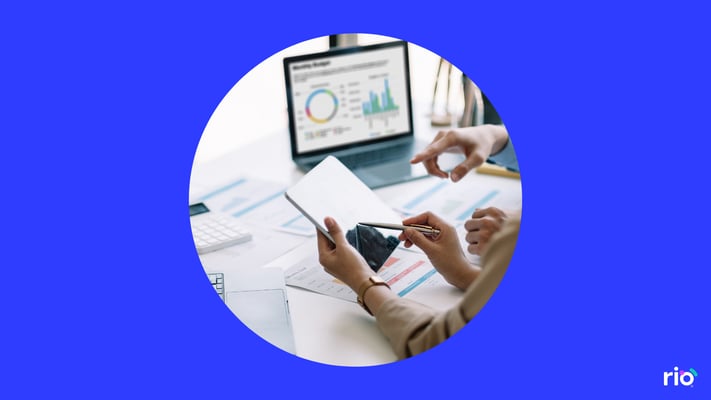Our Chief Executive, Dan Botterill, recently had a discussion with James Holley, Head of Environment, Social and Governance (ESG) at Bridgepoint on all things ESG and investment data. Bridgepoint is an alternative asset fund management group focussing on the Middle Market, and have adopted responsible investing principles into their work and business practices.
James spoke with us as part of our most recent resource guide, ESG Due Diligence, Compliance, and Voluntary Reporting: A Data Collection Guide for Financial Services. This guide provides snapshot of the ESG due diligence data landscape, and some practical steps for collecting data.
How do you look not just at the ESG performance of your portfolio, but internally, at Bridgepoint’s performance?
It’s incredibly important that you lead by example and walk the talk. Initially we dove straight into our portfolio, thinking that’s where we could have the biggest impact, but you need to look at yourself as well. In leading by example, you can look at your portfolio, and support them on improving their ESG performance, but you also need to practise what you preach.
In the past few years we’ve really dialled up our internal efforts, and now we prioritise supporting the transition to the low carbon economy, thinking through and mapping our own carbon footprint, as well as developing and implementing a DE&I (Diversity, Equity & Inclusion) strategy across the whole firm, especially in investment teams, as private equity is behind on female representation.
What are the biggest challenges for you in setting ESG metrics, measuring them and then improving over time?
The main challenges are related to the myriad of standards and frameworks. Although there are a number of organisations and initiatives trying to provide standardisation, it's a real challenge.
Another challenge is that there isn’t a standard set of metrics we should look at for every business. We have a diverse portfolio of companies across six different sectors, and businesses at all different scales and maturity of their investment cycle, it’s very hard to apply a one size fits all approach. We try to identify common themes for ESG metrics across our portfolio, and there are some - net zero, carbon emissions, DE&I in boards - but there are also company specific KPIs that we want reported to us, if it’s materially relevant.
So we have a holistic set that we look to, and then based on materiality we look at a further subset of metrics. For this subset, the challenge is that some of our companies may not have the in-house capabilities and the resources to understand and decipher what is relevant to them. Then they look to us for guidance and support. Or use third party consultants to support them, but not all of them have the luxury to work with consultants. So it becomes the challenge of helping them to understand what is relevant and where they should start, and what they should prioritise.
What have you found are the most effective ways of engaging with your portfolio on ESG?
Having an open and collaborative style is very important, we look to engage as proactively as possible in our investment lifecycle, so even at the due diligence phase or between signing and completion we’re starting to build up that rapport and a narrative of a partnership. There is no trick to it, it’s just a style of engagement.
What has helped is we’ve developed guidelines for our portfolio companies that we’re able to share with all our current companies and new companies that come into our portfolio. It sets out our minimum requirements and expectations, recommendations, examples of core KPIs, or standard KPIs vs sector specific KPIs.
It’s also formalised through the shareholder agreement that we require the ability to engage on ESG and request information from them. Not that we ever usually have to invoke that, it just means from day one it’s understood as a collaborative approach.
Do you use third party data sources? And if you do, how do you use them?
We do use a third party that provides reputation risk information on companies. It trawls the web to identify any negative press related to ESG incidents at a company, this is something we would also use in a due diligence context.
We’re not using any rating agencies yet, however now Bridgepoint is a listed firm I think there will be an increasing demand for that type of data. I think we may start to use data providers to help with proxy data for calculating carbon emissions, especially in our credit business where you don’t have direct interaction with the portfolio companies and you have very limited information.
Generally data-providers are not suitable for us because of data availability. We’re often looking at private companies but ESG data providers have built up their data based on listed companies, which can provide benchmarking, but data on that company can be hard to access because it’s not in the public domain.
When you are looking to invest in a company, is there a holistic approach to due diligence?
It’s a mix, you still have issues focused diligence, because it's about what is materially relevant in the whole ESG agenda of this company and what could be a risk or value driver, or risk of value erosion. So it does come down to needing to focus the assessment on the material ESG topics relevant to the business.
What we’re seeing more of is a high level assessment of the general governance and maturity of ESG in a company - how does it think through ESG from a strategic perspective? How does it report? What is it reporting? What resources does it have in place and accountabilities? Then we’ll dive into specific topics. For example, if it’s a manufacturing business we will look into environmental compliance, waste, water, health & safety, the supply chain, responsible sourcing. All of that is material focus areas.
For performing pre-investment due diligence, have you found data and information is becoming more readily available from companies?
I would say it is still quite a challenge, especially within private businesses. You still use consultants, and people, you have to ask questions, you have to visit the site and ask more questions, because really the data rooms and the information that you want, isn’t readily available or available on the website or through other data providers, so you really have to bespoke your assessment, and if you’re lucky - get access to management so you can have a direct conversation with them. Of course that is all time, effort, it’s people - so it’s not really an efficient process.
How does the measurement change from due diligence to when the company is in your portfolio?
We very much use the due diligence as a platform to engage with management, talk through the findings, use it as a launchpad for developing a broader ESG approach and road map. So it becomes quite important and we look to integrate the ESG findings from the due diligence into our 100 day plans and then that forms part of our ongoing assessment and engagement of ESG in the companies. And often our ESG advisors are retained to do more detailed post-transaction work, to help set the policy, set the framework, agree on the material ESG initiatives and KPIs that are going to be reported, and then implement a reporting framework. But in the businesses that we invest in, more often than not, there is an opportunity to enhance their data collection and reporting, and it isn’t automated. What you see is that it’s quite spreadsheet driven.
What does pre-investment ESG due diligence look like in ten years time?
In terms of the investment strategy, we will only be focused on businesses that have that prioritise and balance their benefit to society, and our investors will drive us to do that as well. There will be more focus on climate and net zero and where companies are in that journey, there will be tighter linkage of financial performance and value attached to the topics. I think there might be a more standardised approach to due diligence and scoring for businesses on the way in, as a baseline to be used for during your ownership period.
Overall, I see it becoming more optimised and automated, with higher level screening tools available to actually get a good way through the assessment without having to spend time with management which is where platforms, solutions, and software, like Rio, have a major role to play.
Thank you to James Holley for his time speaking with us.

Want to know more?
Our latest guide, ESG Due Diligence, Compliance, and Voluntary Reporting, provides a snapshot of the ESG due diligence data landscape, and some practical steps for collecting data. This guide is designed to provide practical and clear insights on the common challenges and suggested actions for pre-investment ESG data collection.
To hear more from James, watch our panel discussion held at Global ESG Live: 'Mapping the EU SFDR and the road to heightened ESG disclosures.' This panel was moderated by James Holley, Head of Environment, Social and Governance (ESG), Bridgepoint, with speakers Dan Botterill, Founder and CEO, Rio ESG, Karl Andersen, Managing Director, AVG and Silva Dezelan, ESG Director, Stafford Capital Partners
You can also learn more about Rio, or contact us today to book a meeting.

-1.png?width=2800&height=1400&name=Untitled%20design%20(11)-1.png)




